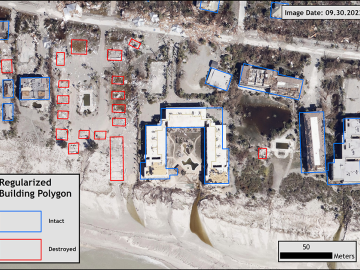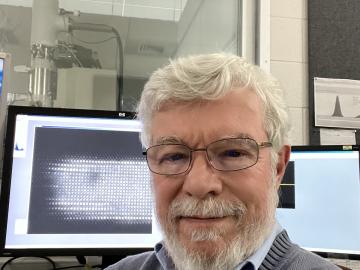
Filter News
Area of Research
- (-) Materials (47)
- (-) National Security (24)
- Advanced Manufacturing (3)
- Biology and Environment (47)
- Computational Biology (1)
- Computational Engineering (1)
- Computer Science (5)
- Energy Science (59)
- Fusion and Fission (8)
- Isotopes (1)
- Materials for Computing (12)
- Neutron Science (18)
- Nuclear Science and Technology (3)
- Quantum information Science (4)
- Supercomputing (115)
News Type
News Topics
- (-) Artificial Intelligence (20)
- (-) Computer Science (30)
- (-) Exascale Computing (2)
- (-) Frontier (2)
- (-) Microscopy (18)
- (-) Polymers (10)
- 3-D Printing/Advanced Manufacturing (19)
- Advanced Reactors (3)
- Big Data (5)
- Bioenergy (13)
- Biology (8)
- Biomedical (6)
- Biotechnology (1)
- Buildings (4)
- Chemical Sciences (27)
- Clean Water (2)
- Composites (5)
- Coronavirus (4)
- Critical Materials (8)
- Cybersecurity (19)
- Energy Storage (25)
- Environment (17)
- Fusion (5)
- Grid (8)
- High-Performance Computing (7)
- Isotopes (11)
- ITER (1)
- Machine Learning (15)
- Materials (58)
- Materials Science (52)
- Mathematics (1)
- Molten Salt (2)
- Nanotechnology (29)
- National Security (34)
- Neutron Science (29)
- Nuclear Energy (15)
- Partnerships (15)
- Physics (24)
- Quantum Computing (2)
- Quantum Science (11)
- Security (10)
- Simulation (1)
- Space Exploration (1)
- Summit (3)
- Transportation (9)
Media Contacts

Chemist Jeff Foster is looking for ways to control sequencing in polymers that could result in designer molecules to benefit a variety of industries, including medicine and energy.

A technology developed at ORNL and used by the U.S. Naval Information Warfare Systems Command, or NAVWAR, to test the capabilities of commercial security tools has been licensed to cybersecurity firm Penguin Mustache to create its Evasive.ai platform. The company was founded by the technology’s creator, former ORNL scientist Jared M. Smith, and his business partner, entrepreneur Brandon Bruce.

U2opia Technology, a consortium of technology and administrative executives with extensive experience in both industry and defense, has exclusively licensed two technologies from ORNL that offer a new method for advanced cybersecurity monitoring in real time.

The U.S. Departments of Energy and Defense teamed up to create a series of weld filler materials that could dramatically improve high-strength steel repair in vehicles, bridges and pipelines.

While studying how bio-inspired materials might inform the design of next-generation computers, scientists at ORNL achieved a first-of-its-kind result that could have big implications for both edge computing and human health.

Laboratory Director Thomas Zacharia presented five Director’s Awards during Saturday night's annual Awards Night event hosted by UT-Battelle, which manages ORNL for the Department of Energy.

Over the past seven years, researchers in ORNL’s Geospatial Science and Human Security Division have mapped and characterized all structures within the United States and its territories to aid FEMA in its response to disasters. This dataset provides a consistent, nationwide accounting of the buildings where people reside and work.

ORNL has been selected to lead an Energy Frontier Research Center, or EFRC, focused on polymer electrolytes for next-generation energy storage devices such as fuel cells and solid-state electric vehicle batteries.

Larry Allard, a distinguished research staff member at Oak Ridge National Laboratory, has been named a Fellow of the Microanalysis Society.

Cameras see the world differently than humans. Resolution, equipment, lighting, distance and atmospheric conditions can impact how a person interprets objects on a photo.


